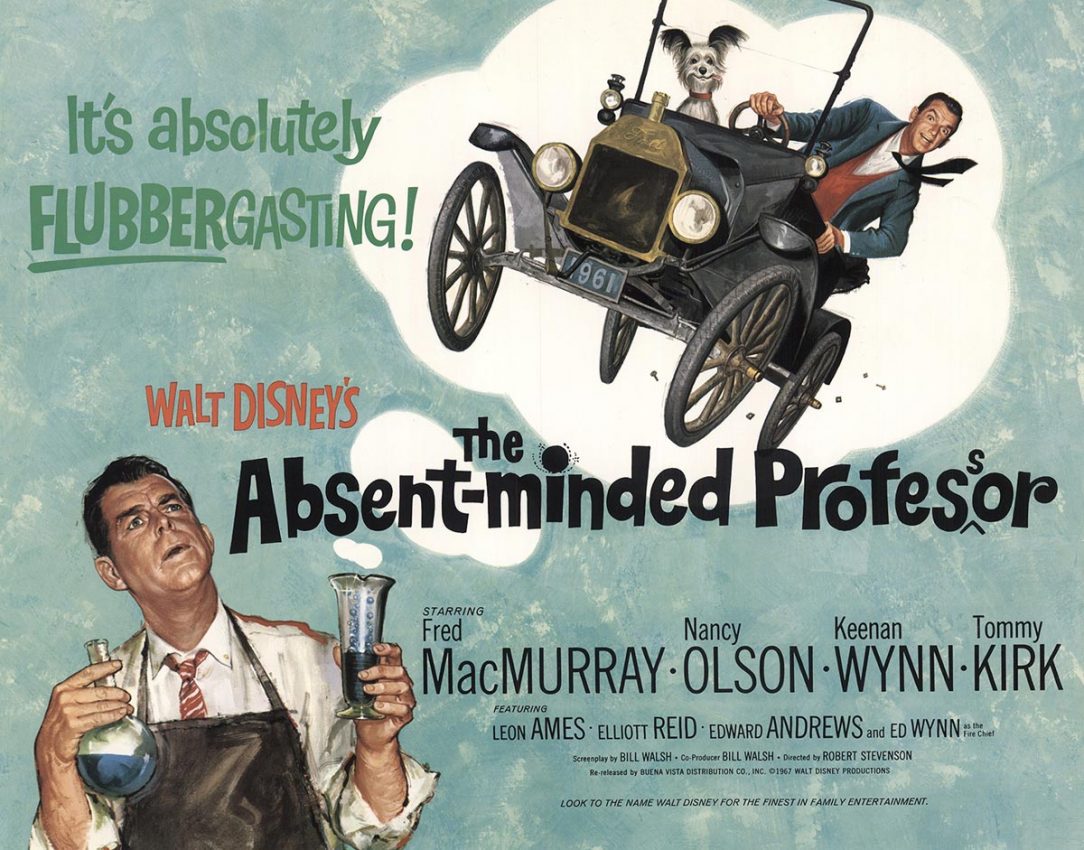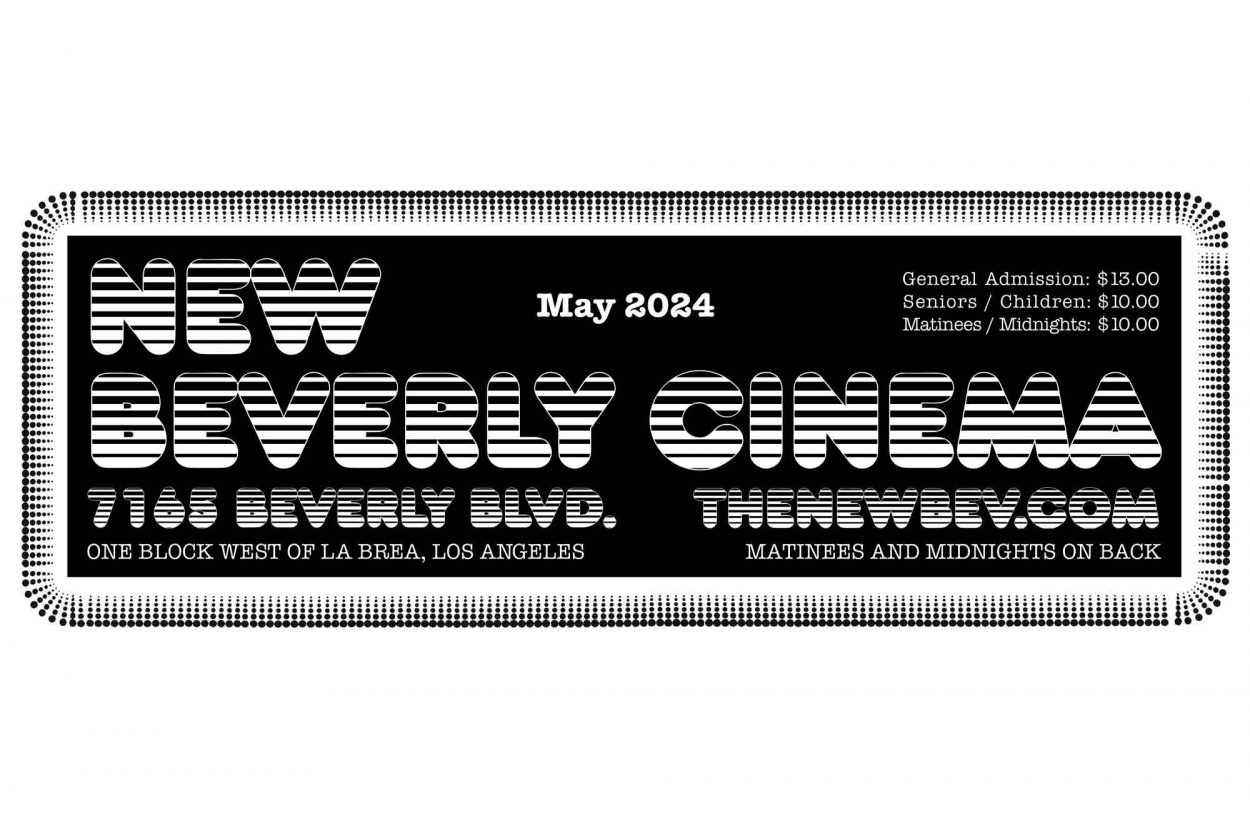First, some trivia: The Absent-Minded Professor and Son of Flubber – both playing as a double feature on Friday & Saturday, November 3rd & 4th – were two of six films to be set at Medfield College, that idealized institution of learning that was also the home to The Computer Wore Tennis Shoes, Now You See Him, Now You Don’t, The Strongest Man in the World, and the 1997 Flubber. Why critics don’t mention these films in modern discussions of cinematic “shared universes” can only be the result of oversight. Son of Flubber was also the first sequel ever made by Disney, as Walt famously hated sequels. It wouldn’t be their last.
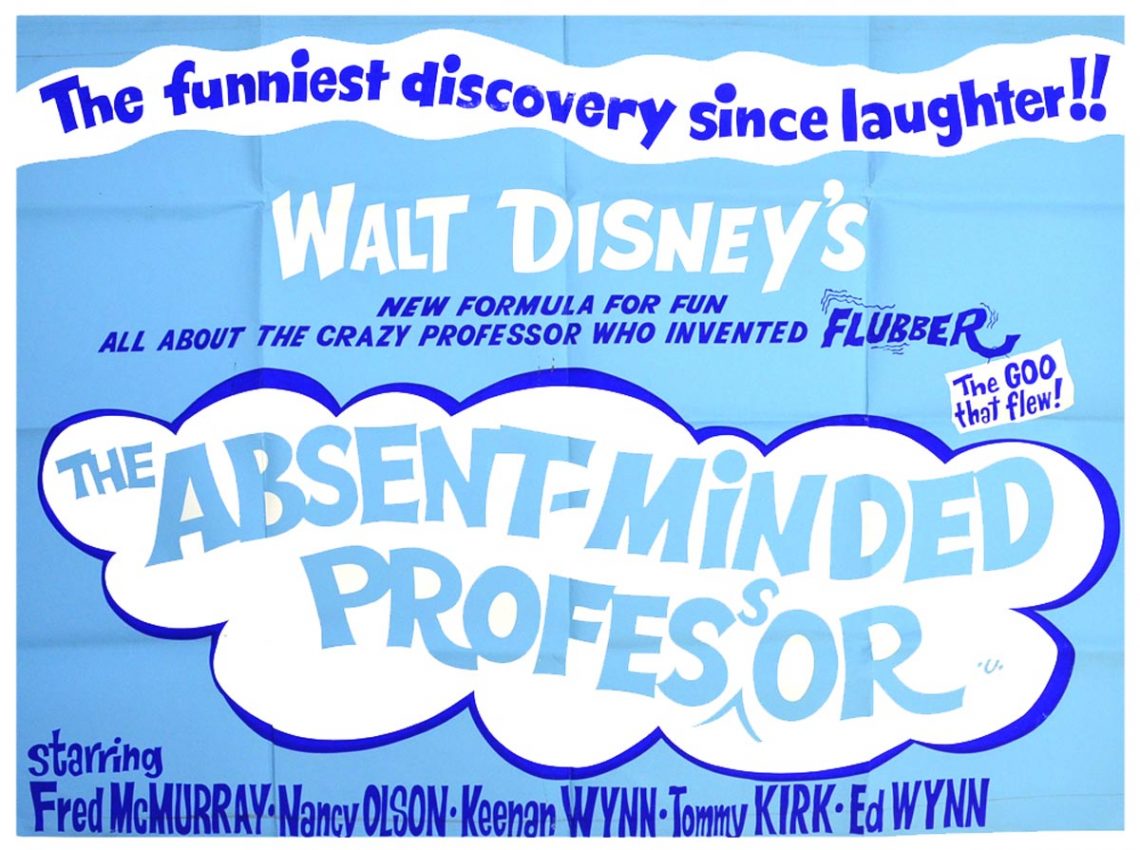
If you want a glimpse at what America once considered to be its own Edenic ideal, you need look no further than the live-action films produced by Walk Disney in the 1950s and 1960s. Judging by his films and theme parks, it’s easy for even the most casual observer to glean Walt Disney’s own personal mission statement: Present a pleasant – if artificial – Heaven of what America ought to be at the best of times. There is no major conflict in Disney’s Eden. Evil is easily recognizable in the form of dragons and monsters, hate between heroes is nowhere to be seen, true love triumphs over all, and everyone lives in a small mid-country city where the denizens are enjoying a massive overdose of quaintness.
The biggest villains in Disney’s idealized live-action films tend to be angry people, greedy people, and those who are eager to sell out (I am, of course, not the first to note the irony of this sort of anti-greed message being hocked by one of the largest, most ambitious corporations in the world). The villain in both 1961’s The Absent-Minded Professor and its sequel, 1963’s Son of Flubber, is played by none other than the eternally grumpy Keenan Wynn. Wynn plays Alonzo Hawk, a role he would reprise, oddly, in 1974’s Herbie Rides Again, and go on to duplicate in Snowball Express and The Shaggy D.A.. Alonzo Hawk is a banker. He is motivated by money. He doesn’t react well to being told that he can’t have something. He’s a grown spoiled brat. He’s such a villain that even his son (played by Tommy Kirk) is passive in comparison.
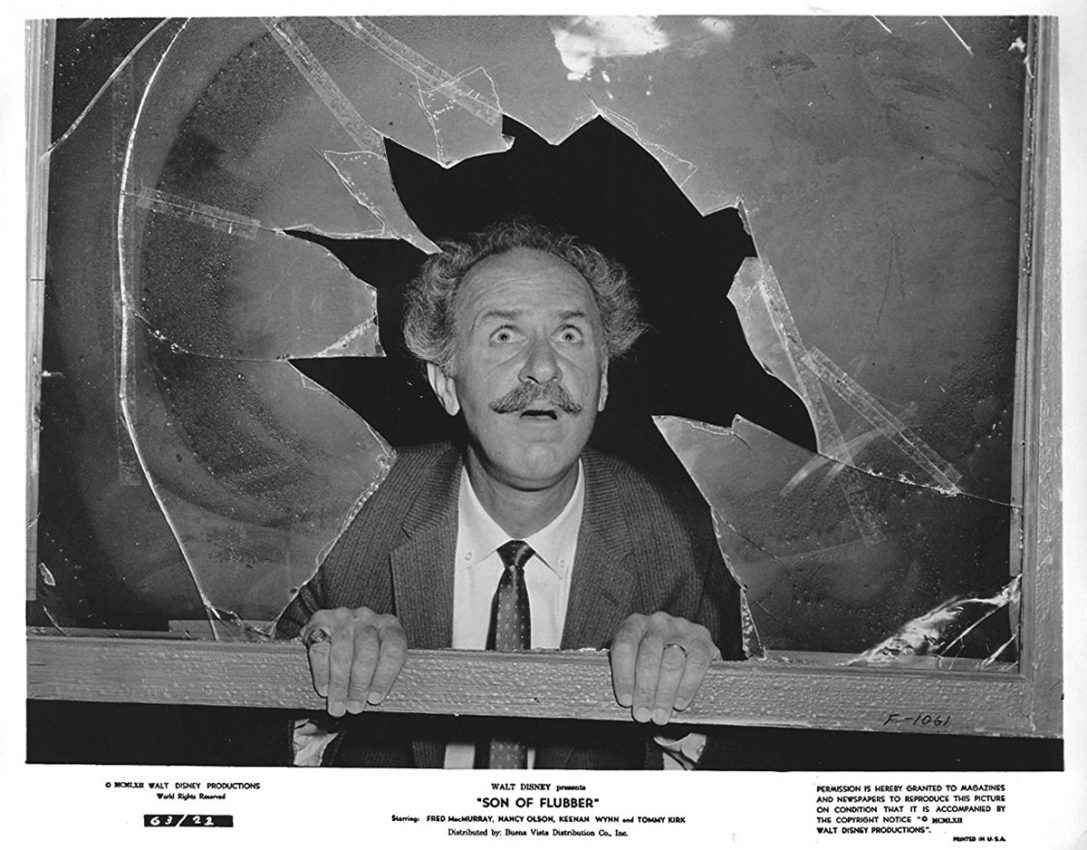
Alonzo Hawk can perhaps be described as the Platonic ideal of Mr. Potter from It’s a Wonderful Life. Stripped of his humanity, Hawk is an overblown cartoon who will cheat and lie to get what he wants. Wynn, never playing it close to the chest, seems to relish in being God’s Grumpy Gus. Even in the idealized version of Disney’s America, the villains are in their perfect form.
I mention Wynn before I mention Fred MacMurray – Prof. Brainard, the hero of The Absent-Minded Professor and Son of Flubber – because Disney’s idealized heroes – in both live-action and in animation – tend to be infinitely more bland than their evil counterparts. Wynn sputters and growls and panics. He is a cartoonish buffoon in the best possible way. MacMurray’s Brainard, by comparison, is optimistic, tenacious, and possesses all of the usual qualities of a well-rounded person will little in the way of personality. MacMurray, luckily, also infuses the character with a relatable dippy-ness that invokes less a college professor and more a well-meaning but embarrassing dad.
Brainard’s one negative quality, as indicated by the title, is that he’s absent-minded, leading him to miss his own wedding three times. While this type of behavior might be a relationship deal-breaker in the modern age, in Disney’s idealized world, this leads only to a speech of apology, and an infinitely patient fiancee who is willing to put up with your dippy-ness. The fiancee is Betsy, played by the game and excellent Nancy Olson, who played the spunky and intelligent Betty in Sunset Boulevard, and who appeared in a few other Disney live-action flicks including Pollyanna. Olson refuses to play the part of Betsy laying down. She will fight tooth and nail to give this character some dignity. As such, she comes across as being stronger and more resilient than Brainard could ever hope to be. I understand why Brainard would want to work so hard to wed her.

The true main character of The Absent-Minded Professor and Son of Flubber, however, is the flubber itself. The name – a portmanteau of “flying” and “rubber” – is a molasses-like ooze that, when balled up and bounced, accumulates energy rather than expending it. Hence, it bounces higher and higher. Although there is no official product tie-in, the films seem to be banking on the recent craze of Silly Putty, which first hit the American marketplace sometime prior to 1955.
It’s easy to imagine a young child, playing on their kitchen floor in 1955, conjuring an idea like flubber. It’s a squishy rubber ball that doesn’t stop bouncing. The toy makes its own fun, and can be employed however you want. In Professor, it’s spread on the bottoms of basketball sneakers to help a college team win a game. In Son of Flubber, it’s given to football players. When smeared on the interior of a car (and then exposed to safe, safe radiation) it can make a car fly! It can also, curiously, change the weather. There’s nothing this miracle product cannot do. The Flubber movies are a wonderful wish-fulfillment fantasy for all toy-loving little kids. This is an ideal America, and the world’s greatest treasure is, essentially, the world’s most perfect toy.
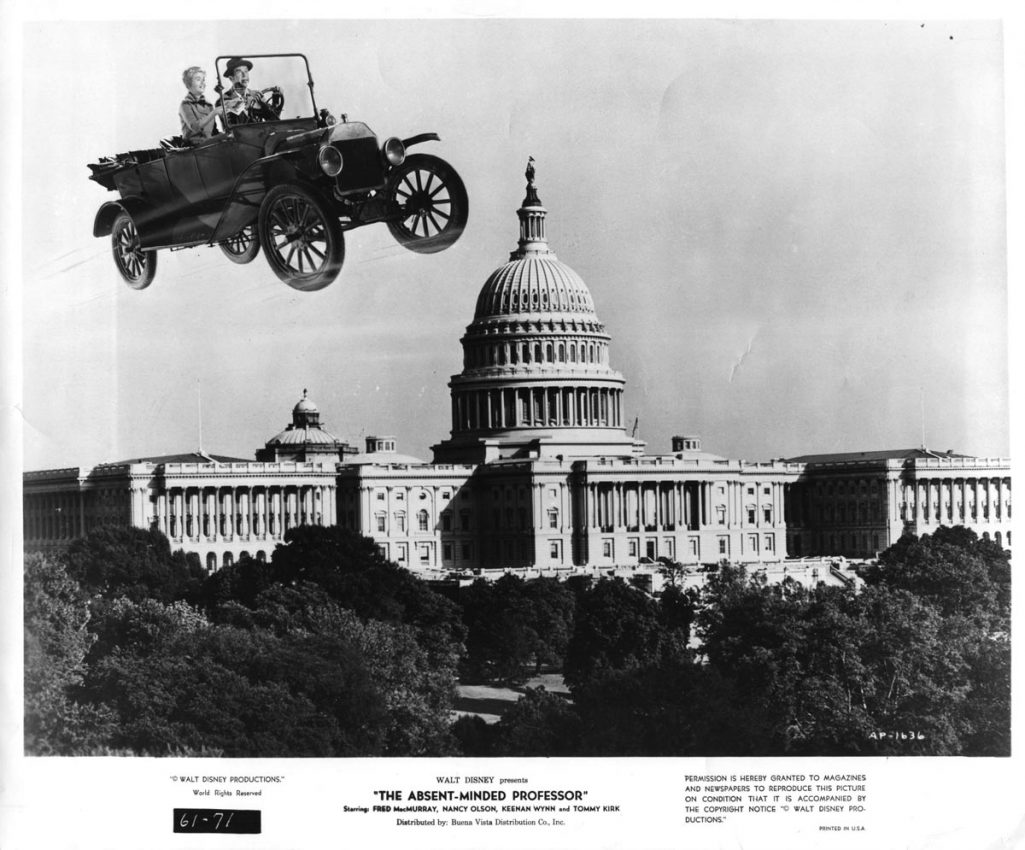
Disney’s inception of flubber likely has to do with America’s plastics explosion following WWII. During the War, Japan invaded and occupied many of the rubber-producing nations in the hopes of curtailing America’s production of rubber boots, rubber rafts, and other items needed by soldiers. Americans started devising their own synthetic rubber and plastic compounds, eventually inventing new super polymers and plastics the likes of which we’re still using to this day. A screenwriter, perhaps noticing this “plastics boom,” constructed a kid-friendly script around it. The Flubber movies are, perhaps more than anything, a celebration of American tech ingenuity and American exceptionalism. Invent! Create! Play! Win! Become rich! Marry Nancy Olson!
There is, of course, a dark, cynical side to that exceptionalism (one that includes corporate mastery, rejection of outsiders, and Ayn Rand), but Disney films are certainly not where we are going to analyze those evil byproducts. We can leave that conversation for another time.
Instead, we’re going to have a soda, lay back, and enjoy what our nation might be in the best of times. Disney’s live-action movies are very akin to the musicals of the 1930s. We’re going to ignore the misery outside, and escape into a world of gentleness and goofiness. Disney has been so masterful in their creation of this idealized America that it may have even influenced our culture at large, allowing us to think of our own nation as having once been perfect. The illusion is so convincing, and the world so wonderful, that most audiences can easily be swept up in the corny, halcyon nostalgia of it all. Have some more candy and enjoy the cinematic confection.
